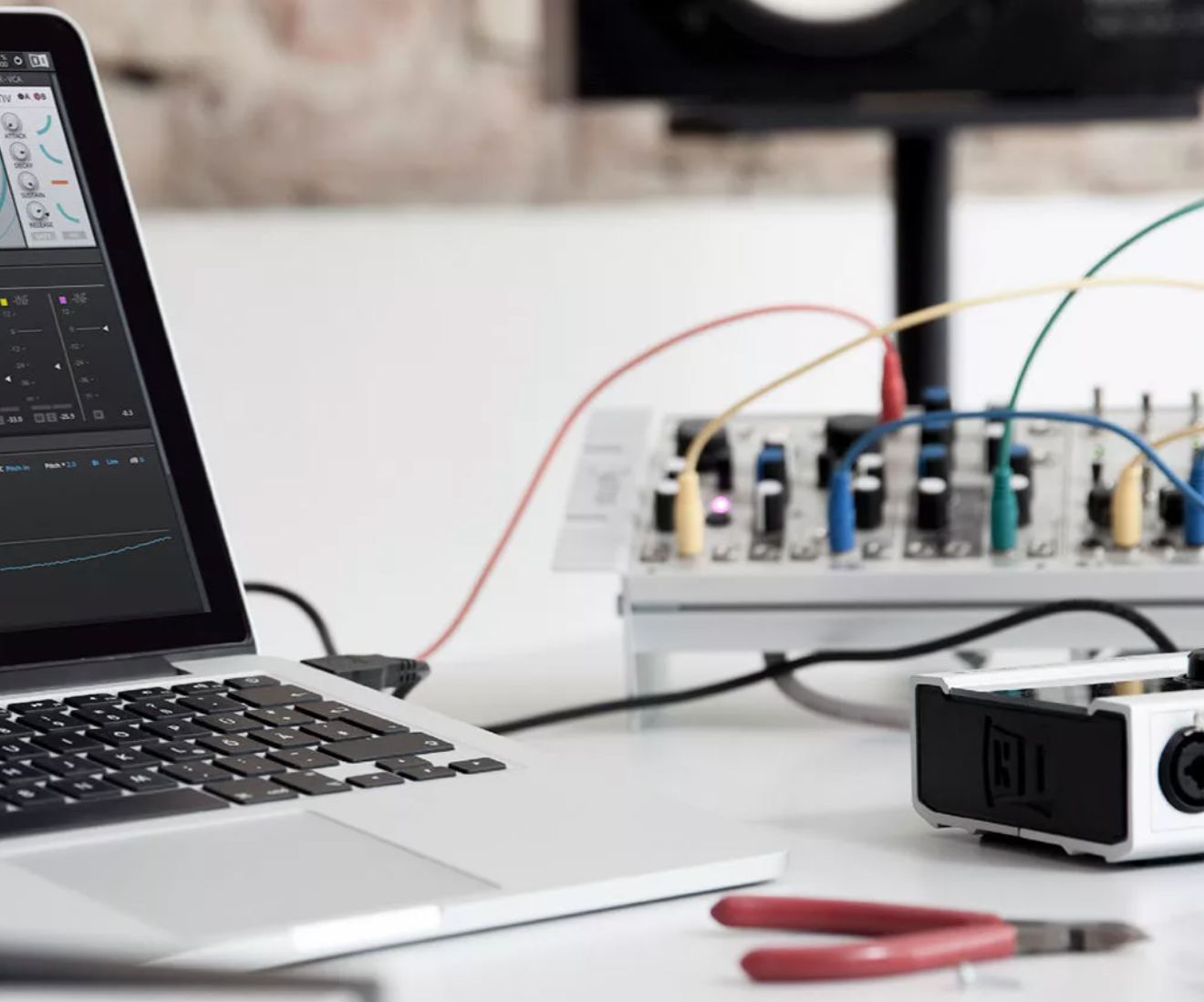If you’ve decided to dive more into modular synthesis, it’s good to have a little background knowledge by looking at the four main formats.
The Eurorack format
In 1997, Dieter Doepfer introduced the A-100 line of modules, and has since been regarded as the father of Eurorack. This was the peak renaissance for modular synthesis and it has continued to increase in popularity ever since. The Doepfer modules are consistent in their design and have inspired countless manufacturers to enter the Eurorack world, resulting in a creative and diverse range of styles and technologies. Patch cables use 3.5mm mini jacks and controls are sized to match, but still relatively user-friendly. Here is a beginner-friendly introduction to Eurorack modular:
The Moog Unit (MU) format
The MU format originated from Bob Moog’s modular synthesizers and is a rather large format, with big knobs, ¼” phone jacks for signal connection and plenty of panel space for operation of the instrument. Moog Music built many systems based on this design, and it was the go-to format for famous artists and bands in the 1960s and 1970s, when analog synthesis thrived and gained widespread popularity. You can see and hear a Moog modular system in action here, while contemporary systems in this format also includes Synthesizers.com and Moon.
The Serge format
Developed by French composer and electronic designer Serge Tcherepnin in the 1970s at the California Institute of the Arts, the Serge Modular system is based on Tcherepnin’s vision to create a ‘synthesizer for the people’. The system uses banana jacks and the 4U modules feature a recognizable design with color coding; red for trigger signals, purple for sync signals, blue for DC coupled signals and black for AC coupled signals. The uniform panel design features aligned patch holes and knobs that provide a structured layout with little contrast. Serge modules and systems are available from vendors like Random Source where Serge is now Chief Innovation Officer, and a thriving community with independent builders makes printed circuit boards, panels and kits available for DIY users. The Swedish company 73-75 have made a modern revival of the original panel designs which looks equally awesome and mysterious:
The Buchla format
With the so-called ‘West Coast’ approach to synthesis, Don Buchla began creating his instruments in approximately the same time frame as Bob Moog (the early 1960s), yet the two approaches were very different. Using banana jacks, the Buchla systems feature color coding of the sockets; CV inputs are black and grey, and CV outputs are blue, violet, and green. Pulse inputs are orange, and the pulse outputs are red. Buchla modules are put together in a self-contained system and often favor experimentation and exploration of the infinite possibilities these (often multifunctional) modules offer. This is also reflected in the variety of panel layouts and lights, which give feedback to the user.
Here is Suzanne Ciani, explains her work with the “mysterious” Buchla system:
The world of modular synthesizers is vast and plentiful. In this world, there are many different functions, ideas, and ways of approaching music. Check out PUSH TURN MOVE and PATCH & TWEAK for more insight into this fascinating plane of music making. If you’re particularly interested in the Moog ecosystem, check out PATCH & TWEAK with Moog.
Interested in modular synthesizers but unsure how to get started? Join us next time for the 7 ways to explore modular.
This article was part of a blog-series originally appearing at https://blog.native-instruments.com who kindly allowed us to repurpose Kim's articles again – here in a version edited by Collin Russel.


